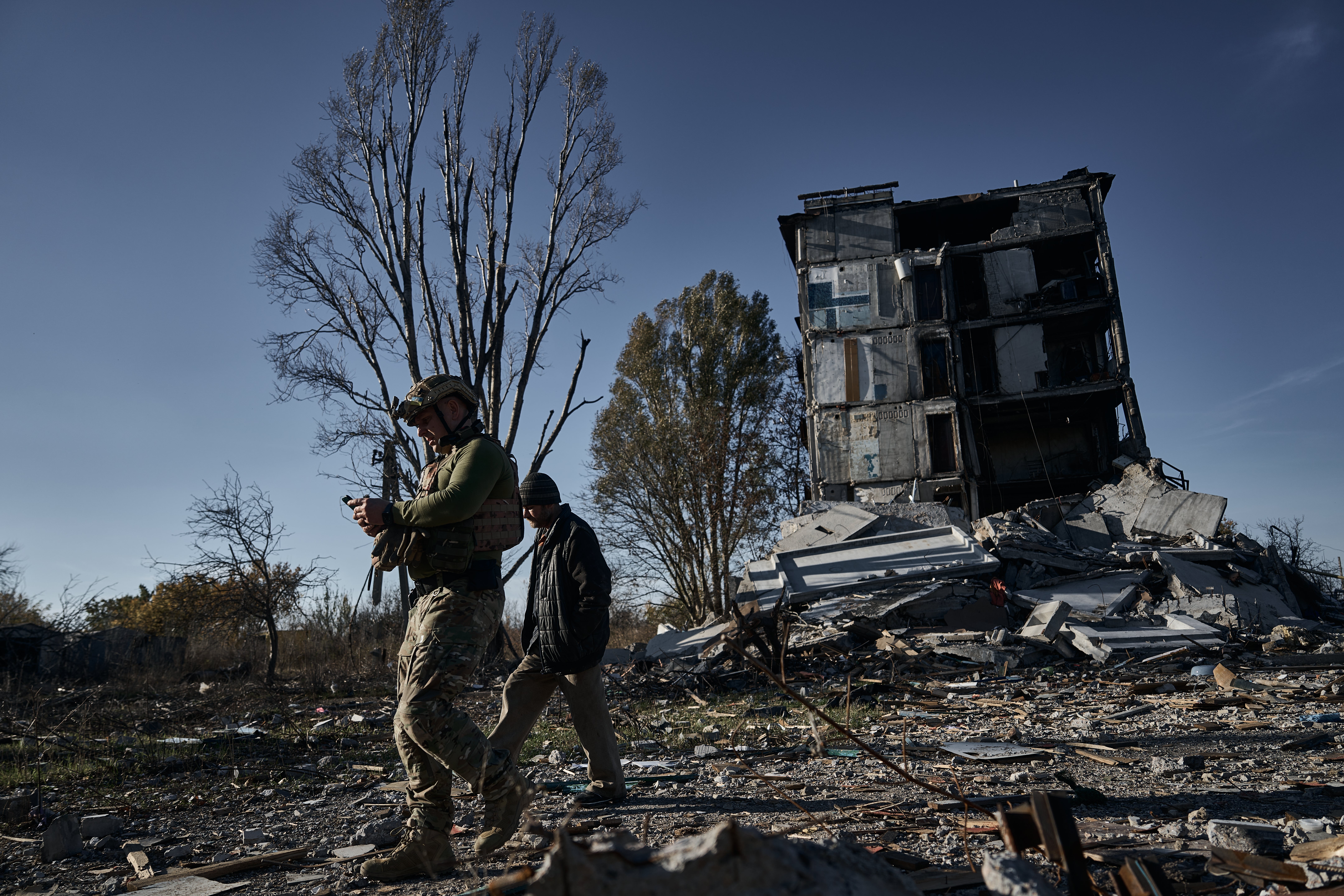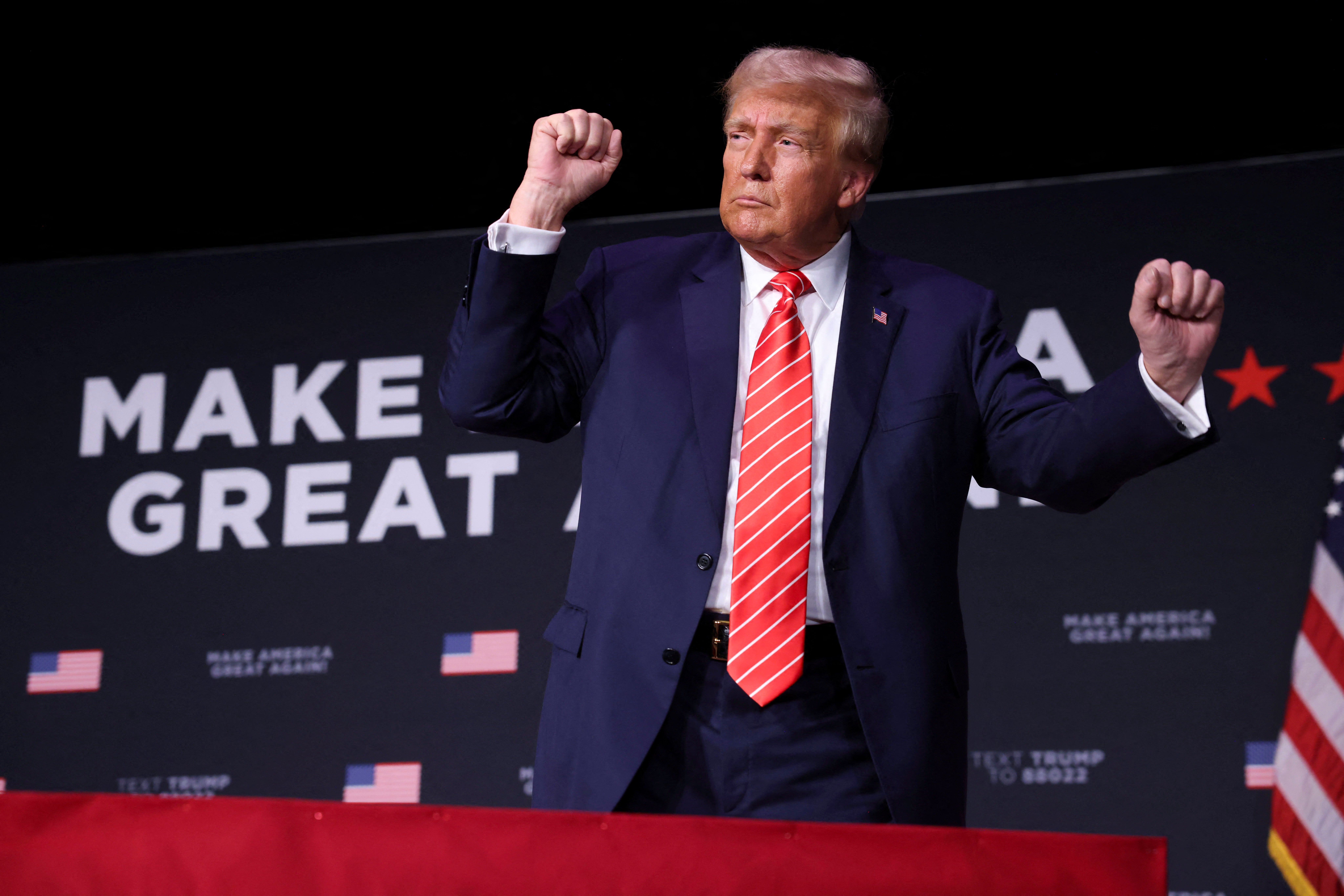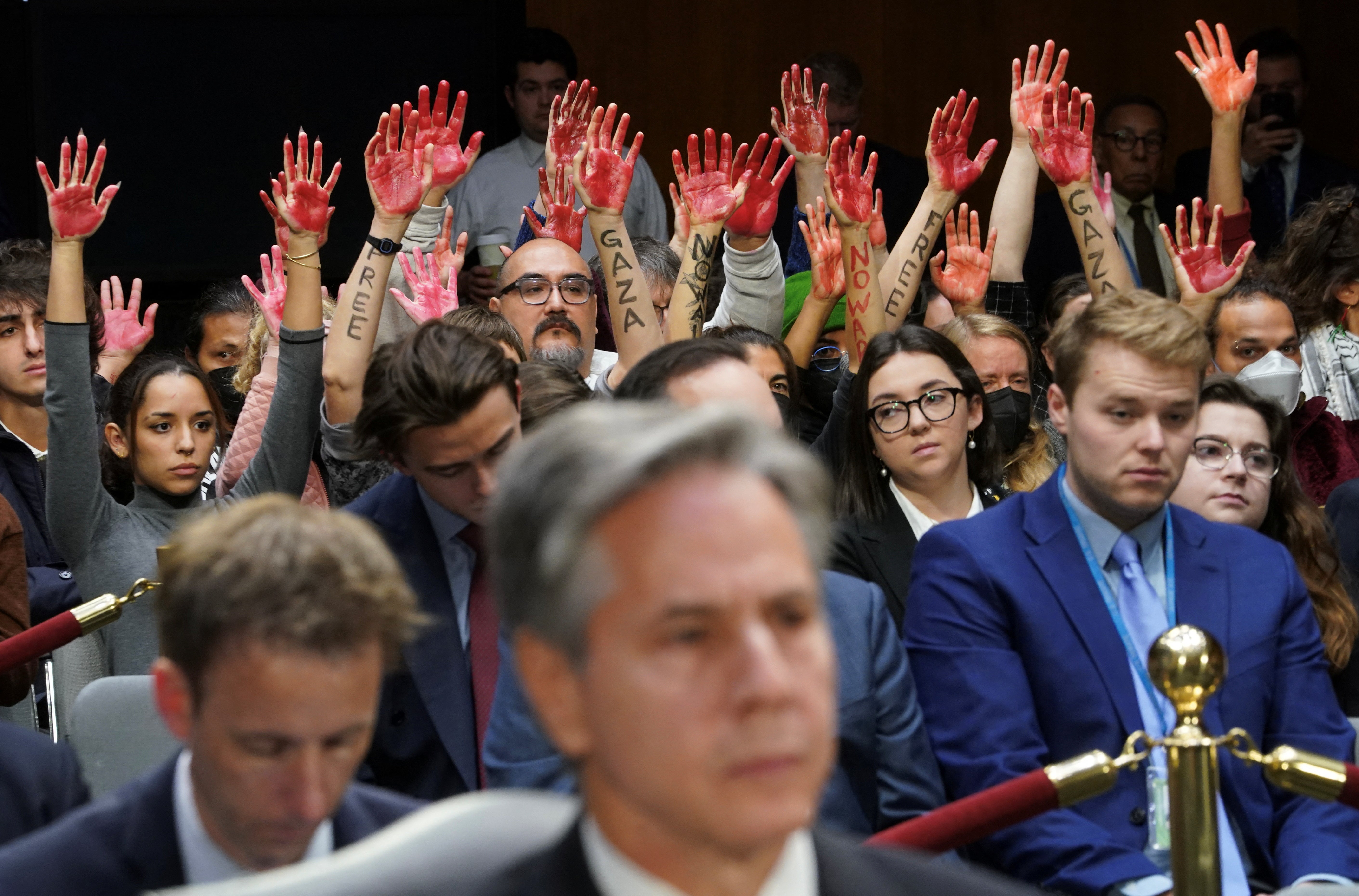Trump’s shadow looms large over Congress battle that could define Ukraine war
The timing could not be worse. Just as Ukraine is fighting to repel one of the fiercest Russian onslaughts since the war began, so fears emerge that US support to Kyiv could be severely undermined by Republicans loyal to the former president, says Askold Krushelnycky

Ukraine is seeing some of the fiercest fighting since Moscow’s full-blown invasion began, with Russia going all-out to smash through several Ukrainian frontline positions despite sustaining enormous casualties.
Ukraine’s soldiers, also taking numerous casualties, have so far prevented any significant Russian breakthroughs.
The Ukrainian military’s commander-in-chief, General Valery Zaluzhny, has said the conflict has reached a stalemate which he compared to the bloody parity that obtained on the trenches of the Western Front during the First World War.
He admitted, in an essay for The Economist, that despite the large quantities of Western-provided modern weapons, the offensive Ukraine began this summer was unlikely to produce the dramatic breakthroughs Kyiv had hoped for. He put particular emphasis on how drones and electronic warfare techniques had become massively important in the conflict and were likely the key to a victory within a timetable that did not exhaust Ukraine’s reserves of manpower.
Zaluzhny said that a prolonged war favoured Russia because of its advantages in size of population, economy and weapons-manufacturing capacity. He said that while human life was regarded as a cheap resource by Russian dictator Vladimir Putin, Ukraine cared much more for its soldiers’ lives, leading to more cautious tactics.
Zaluzhnyi outlined five components Ukraine needed to break the deadlock: gaining air superiority; breaching the massive densely sown Russian minefields; improving the capacity of its counterbattery combat to knock out enemy artillery; creating and training reserve forces; and building up drone and electronic warfare capabilities.
He was still confident Ukraine could defeat Russia but emphasised that while Ukrainians had demonstrated willingness to give “soul and body” in the fight, success depended on the continued supply of technology, weapons, ammunition and other military support by Kyiv’s Western allies.
But Kyiv’s ability to carry on fighting is tied to another battle – one being played out between the US Democratic and Republican parties over how much aid to send to Ukraine.
Ukraine’s government has never asked for foreign soldiers to join the fight on Ukrainian soil. But it has always made clear it needs massive quantities of military aid to compensate for being vastly outnumbered by Russia in numbers of weapons and fighters.
The lion’s share of that aid has come from the US and last year it enabled Ukraine not only to stop Russia’s momentum but roll back its forces from much of the territory it initially captured.
Kyiv has long benefited from receiving bipartisan support in the US– a rarity in the vicious political enmity which has made it almost impossible for the parties to agree on most major issues.

Trump’s shadow looms large over Ukraine funding decision
In recent months, a small but powerful section of the Republican Party loyal to former president Donald Trump has increasingly sought to slash or altogether block lavish aid to Ukraine.
The two parts of the US Congress, the House of Representatives (controlled by Republicans) and the Senate (where Democrats have a wafer-thin majority), are so evenly divided between the two parties that a minority of right-wing, hardcore Trump supporters among the Republicans enjoy a disproportionately large influence. They exercised their power last month by kicking out their own House speaker and causing weeks of chaos before a replacement, a right-wing Trump supporter, was elected.
The House of Representatives must first pass proposals before they can be voted into law by the Senate. The House only agreed on temporary compromise measures to avoid a federal government shutdown by dumping an aid package for Ukraine. That agreement expires on 17 November and more chaos looms with aid for Ukraine certain to become a major battle when the two parties seek to avoid a government close down again.
Aid for Ukraine – or rather, for hard-right Republicans, blocking support for Kyiv – has become a Trump loyalty test. Many Republicans who previously and unhesitatingly voted for aid to Ukraine and even now, privately, say they want to continue helping, are fearful that doing so will destroy their political careers.
Trump, who has questioned aid for Ukraine, is the frontrunner for his party’s presidential nomination and has immense influence over who his supporters will choose as their party’s candidates in next year’s presidential and congressional elections.
The majority of Senate Republicans, led by their veteran leader and staunch Ukrainian ally Mitch McConnell, would likely support prolonging aid for Ukraine, but a package of proposals needs to first be passed by the House.
McConnell, a traditional conservative, is at odds with his fellow Republican, the new House speaker, Mike Johnson, and the fate of Ukraine’s aid package depends on the two men forging an agreement.
After last month’s House compromise, president Joe Biden proposed a $105bn (£86.6bn) aid package to be split between Ukraine and Israel with $61bn (£50.3bn) going to Kyiv. However, Johnson has demanded that the aid for Israel should be decoupled from aid for Ukraine.
Republicans have the votes in the House for their proposal of $14.3bn (£11.3bn) for Israel and nothing for Ukraine to gain a majority. But, as Democrats enjoy a majority in the Senate – whose approval is needed for the measure to pass – it will almost certainly be rejected with demands aid is provided to both countries and that could lead to an impasse detrimental to both Israel and Ukraine.

Ukraine is holding Russia at bay... for now
Ukraine’s other Nato and Western allies have played an increasingly important role in supplying weapons, ammunition and other vital aid. But if American aid was drastically diminished or even halted that would spell disaster for Ukraine.
The threat could not come at a worse time, as Ukraine is fending off determined attacks by Russia to seize more territory before the winter slows fighting. Many believe Vladimir Putin is desperate for a battlefield success to use in the Russian presidential elections he is predicted to run in next spring.
Moscow’s attempt to overrun Ukrainian positions at Avdiivka, close to the key Russian-occupied city of Donetsk, its prized and vital possession in Donbas, has intensified since it began early last month and may become an even bloodier battle than the one around Bakhmut, Europe’s fiercest since the Second World War.
British intelligence says at least one thousand Russians have died and Moscow has lost more than a hundred tanks and other armoured vehicles around Avdiivka. The Ukrainian general staff gives far larger numbers for both Russian dead and destroyed materiel. It is known that Ukrainian casualties are high, although not as big as Russia’s. Kyiv never gives out Ukrainian casualty statistics.
Russia bombarded 118 Ukrainian towns and villages in 24 hours this week – more than on any other day this year – according to Ukrainian interior minister Ihor Klymenko. He said 10 of Ukraine's 27 regions had come under attack and the onslaught had caused deaths and injuries.
Avdiivka, defended by Ukrainians since the initial 2014 invasion, is important to both Kyiv and Moscow for symbolic reasons. Although the town is now largely in ruins it still has strategic significance, because important road and rail lines passing through it are denied to Russia while they are in Ukrainian hands. Two concerted attempts by the Russians to take the town have failed since early October but Ukrainian intelligence believes, after seeing many new Russians troops and armoured vehicles moving into the area, that Moscow will soon launch a third onslaught.
Vitaliy Barabash, a local government leader, said on Wednesday, the town “is being erased, shattered. There have been more than 40 massive shelling attacks against the territorial community in the past day.”
Although thousands are dying there have usually been only minuscule changes along the front lines. Ukraine’s offensive, which began in early June with the goal of punching a way through to the Azov Sea and cutting Moscow’s “land bridge” supplying its forces from Russia along the coast to Crimea, has made limited progress.
Rather than Kyiv’s troops reaching the coast before the end of this year, a more realistic objective for the Ukrainians is that they will reach far enough south to enable their artillery to hit the hundreds of Russian supply depots along the route.
Western intelligence agencies and the independent think tank, Institute for the Study of War (ISW), have assessed that, for the most part, Ukrainian forces have held their own and been able to repel Russian attacks.
As well as some progress in its drive for Melitopol, in the western Zaporizhzhia region, the ISW has seen over the last few weeks incremental Ukrainian advances around Bakhmut and the establishment of a bridgehead on the left (eastern) bank of the Dnipro River in Kherson, which could develop into a serious threat for Russian forces there and another jumping off point for Kyiv’s troops to reach the Azov Sea.
However, if the supply of weapons and ammunition from the US dwindles, Ukraine could once more be fighting not only to retain its territory but to be dangerously unarmed in the face of Russian forces bolstered by, albeit ill-trained, but large quantities of new recruits and dated but plentiful heavy weapons.
This week US secretary of state Antony Blinken and defence secretary Lloyd Austin appeared before Congress and appealed for assistance to be approved for both Ukraine as well as Israel.
Austin said that Ukraine needed the aid to continue its fight during the coming winter and warned that Putin was relying on Western aid for Kyiv to falter – something the Russian dictator has endlessly predicted and enabled him to convince Russians they would eventually be victorious.
Austin said if the US Congress failed to provide that aid it would be “pulling the rug out” from under Ukraine and bluntly warned: “I can guarantee that without our support Putin will be successful.”






Join our commenting forum
Join thought-provoking conversations, follow other Independent readers and see their replies
8Comments